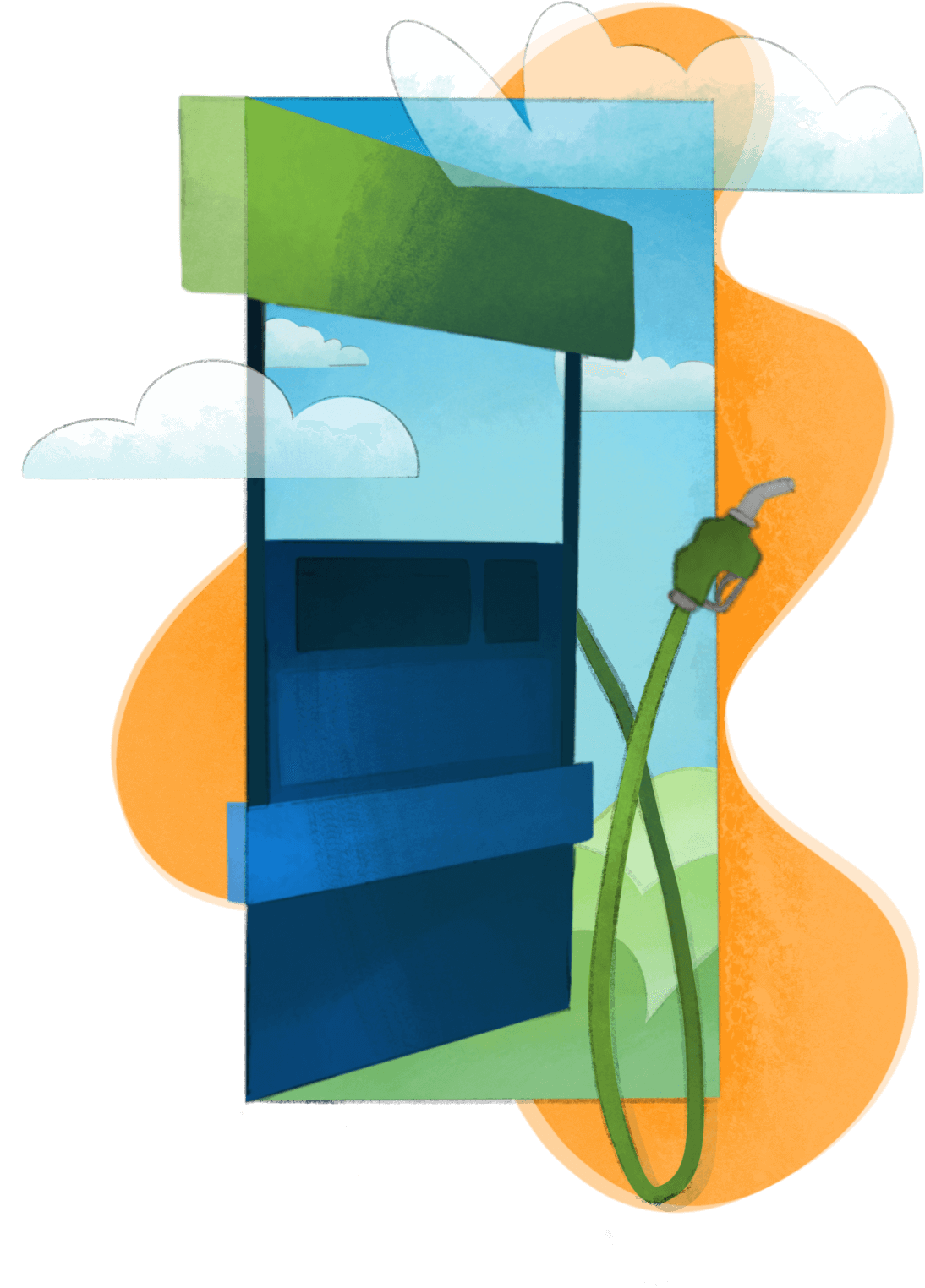Environmental challenge accepted
It’s super easy, and you’re actually already doing it each time you fill your tank. Now just up your game and use E10 when you fill up. Instantly you’re doing even more to remove harmful chemicals from the environment.
Ethanol is a clean burning renewable fuel. Not just in the Visegrad4 countries or the EU, it is widely used also in the US to save the climate, improve air quality, contribute to rural development or increase energy independence.
Pollution solution
To put it simply, ethanol reduces pollution, saves the climate and improves engine performance. It’s such an easy win for you and the environment.
E10 E5 E85 E20
Blind spots at the pump
Knowledge is power and this knowledge has the potential to change the world, one tank of gas at a time. Whenever it’s time to fill up, use what you learn below to inform your decision on what type of gas to put in your tank. The environment and your engine will thank you.
In the US you also save yourself money.
Explore the benefits
Say Bye-Bye to Bad Air
Using more ethanol in your car will reduce the harmful particulates coming out of your tailpipe, meaning a decrease in air pollution and the health risks associated with it, such as heart disease, asthma and cancer.
Cost effectiveness
Ethanol saves money. It replaces more expensive fuel additives and allows the savings to be passed on to you.
Make Efficiency Your Friend
Ethanol is perfectly safe to use in your vehicle. Not only is ethanol safe for your car’s engine, but it also increases its performance, mileage and cleans your engine.
Take action.
We’ve come a long way in the last 20 years improving the quality of our air. Blue skies, birds chirping, beautiful sunsets — all the things we love about our earth. How can we be sure all this beauty will be around in another 20 years?
We can each positively impact our environment by pumping higher blends of ethanol into our cars.
Up to 30 percent ethanol or E30 is safe for use. Open the door to some ethanol blend basics so you know what to expect at the pump in the US. Learn more
Learn more about what they do in the US to improve air quality one tank of gas at a time. Join the community to receive continued information about the movement we are creating.
See clearly
Emissions
Did you know that the more ethanol you add to gasoline, the cleaner the fuel? This is because ethanol is alcohol — the same stuff that’s in a martini or beer. When you add ethanol to gas, it’s replacing the most toxic compounds in gas. These compounds are known pollutants and ethanol is a readily available and economical alternative.
Studies also show that ethanol blends can reduce toxic tailpipe emissions by up to 50 percent and reduce the most harmful emissions associated with heart disease and asthma. Additionally, studies show corn ethanol reduces greenhouse gas emissions by 39 percent.
Engine Safe
You may not know it, but you are already using ethanol. Nearly all gasoline contains 10% ethanol. While 10% is good, 15% is even better. All cars since 2001 are approved by the Environmental Protection Agency to run E15, or 15%.
You don’t have to stop there; many consumers are making the switch to even higher blends like E20 and E30. Not only are these higher blends engine safe, but you won’t see a noticeable mileage difference with mid-level blends because the car can take advantage of the increased octane, improving performance and mileage.
Cost-Conscious
A recent analysis found that blending 10 percent ethanol into gasoline saves the average household $306 a year. Why? Because ethanol replaces more expensive fuel additives, which means more savings for you. So, think of how much more you’ll save when you use a higher ethanol blend.
A Breath of Air
What is so toxic about our gasoline? Every gallon contains chemicals that are known and suspected carcinogens. Twenty-five percent of gasoline is made up of these chemicals called aromatics. The EPA knows they are dangerous and has classified aromatics as hazardous air pollutants.
What are Aromatics?
Aromatics are made up of chemicals such as benzene, toluene and ethylbenzene. They are added to fuel to boost octane.
You can tell the octane by the number you choose when selecting which gas to put in your car. Octane is needed in gasoline to help with combustion in your engine.
What are the Health Risks Connected to Aromatics?
Often, aromatics that don’t fully combust in your car’s engine create dangerous tailpipe emissions. These aromatics linger in the air longer than most toxins, causing a host of health issues, including heart disease and asthma.
Ethanol vs. Aromatics
Ethanol is also a source for octane and a cleaner alternative. Ethanol can replace aromatics, which reduces emissions. The more ethanol in gasoline, the fewer the aromatics. So higher blends of E15, E20 and E30 mean fewer emissions and better air quality.

Biodiesel.
Juist like ethanol, biodiesel produced in Europe is also better than fossil fuels. EU biodiesel produced from rapeseed and waste brings benefits such as agricultural, energy independence and climate. None of this is true for imported biodiesel feedstocks, mainly palm oil.
Links to rapeseed biodiesel and palm oil
